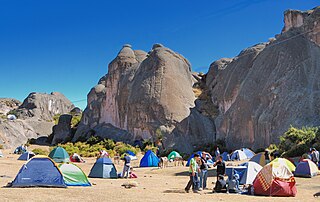
Laetitia Marie Laure Casta is a French supermodel and actress.

Mestizo is a term used for racial classification to refer to a person of mixed European and Indigenous American ancestry. In certain regions such as Latin America, it may also refer to people who are culturally European regardless of ancestry. The term was used as an ethnic/racial category for mixed-race castas that evolved during the Spanish Empire. Although, broadly speaking, mestizo means someone of mixed European/Indigenous heritage, the term did not have a fixed meaning in the colonial period. It was a formal label for individuals in official documents, such as censuses, parish registers, Inquisition trials, and others. Priests and royal officials might have classified persons as mestizos, but individuals also used the term in self-identification.

Cholo is a loosely defined Spanish term that has had various meanings. Its origin is a somewhat derogatory term for people of mixed-blood heritage in the Spanish Empire in Latin America and its successor states as part of castas, the informal ranking of society by heritage. Cholo no longer necessarily refers only to ethnic heritage, and is not always meant negatively. Cholo can signify anything from its original sense as a person with one Amerindian parent and one Mestizo parent, "gangster" in Mexico, an insult in some South American countries, or a "person who dresses in the manner of a certain subculture" in the United States as part of the cholo subculture.

Zambo or Sambu is a racial term historically used in the Spanish Empire to refer to people of mixed Indigenous and African ancestry. Occasionally in the 21st century, the term is used in the Americas to refer to persons who are of mixed African and Indigenous American ancestry. Historically, the racial cross between enslaved Africans and Amerindians was referred to as a zambayga, then zambo, then sambo.

Gustavo Adolfo Claudio Domínguez Bastida, better known as Gustavo Adolfo Bécquer, was a Spanish Romantic poet and writer, also a playwright, literary columnist, and talented in drawing. Today he is considered one of the most important figures in Spanish literature, and is considered by some as the most read writer after Miguel de Cervantes. He adopted the alias of Bécquer as his brother Valeriano Bécquer, a painter, had done earlier. He was associated with the romanticism and post-romanticism movements and wrote while realism was enjoying success in Spain. He was moderately well known during his life, but it was after his death that most of his works were published. His best known works are the Rhymes and the Legends, usually published together as Rimas y leyendas. These poems and tales are essential to the study of Spanish literature and common reading for high-school students in Spanish-speaking countries.

Casta is a term which means "lineage" in Spanish and Portuguese and has historically been used as a racial and social identifier. In the context of the Spanish Empire in the Americas it also refers to a now discredited 20th-century theoretical framework which postulated that colonial society operated under a hierarchical race-based "caste system". From the outset, colonial Spanish America resulted in widespread intermarriage: unions of Spaniards, Amerindians and Black people. Basic mixed-race categories that appeared in official colonial documentation were mestizo, generally offspring of a Spaniard and an indigenous person; and mulato, offspring of a Spaniard and a black African. A plethora of terms were used for people with mixed indigenous, African, and Spanish ancestry in 18th-century casta paintings, but they are not known to have been widely used officially or unofficially in the Spanish Empire.

Torna atrás or Tornatrás is a term once used in 18th century Casta paintings to portray a mixed-race person (mestizo) who showed phenotypic characteristics of only one of the "original races", that is, white, black, Amerindian, or Asian. The term was also used to describe an individual whose parentage was half white and half "albino".

Portuguese wine was mostly introduced by the Romans and other ancient Mediterranean peoples who traded with local coastal populations, mainly in the South. In pre-Roman Gallaecia-Lusitania times, the native peoples only drank beer and were unfamiliar with wine production. Portugal started to export its wines to Rome during the Roman Empire. Modern exports developed with trade to England after the Methuen Treaty in 1703. From this commerce a wide variety of wines started to be grown in Portugal. And, in 1758, one of the first wine-producing regions of the world, the Região Demarcada do Douro was created under the orientation of Marquis of Pombal, in the Douro Valley. Portugal has two wine-producing regions protected by UNESCO as World Heritage: the Douro Valley Wine Region and Pico Island Wine Region. Portugal has a big variety of local kinds, producing a very wide variety of different wines with distinctive personality.

Castizo is a racial category used in 18th-century Colonial Mexico to refer to people who were three-quarters Spanish by descent and one-quarter Amerindian. The feminine form of the word is castiza. Nowadays the term castizo also came to mean mixed-race people with light skin, in comparison to mulattos, pardos, mestizos and coyotes who would be mixed-race people with dark skin.
Latin American art is the combined artistic expression of South America, Central America, the Caribbean, and Mexico, as well as Latin Americans living in other regions.
Blood purity, and related terms pureblood, pureblooded, full-blooded, full-blood, full blood, half blood and half-blooded, are all terms which are or have been used relating to racial purity. It may also be associated with:

San Pedro de Casta District is one of thirty-two districts of the province Huarochirí in Peru. The town of San Pedro de Casta is known for its proximity to Marcahuasi, and receives the majority of its attention from this tourist attraction.

Pulque, or octli, is an alcoholic beverage made from the fermented sap of the maguey (agave) plant. It is traditional in central Mexico, where it has been produced for millennia. It has the color of milk, a rather viscous consistency and a sour yeast-like taste.
Letitia is a feminine given name, of Latin origin meaning "joy, gladness". The name Letitia has many variants, including but not limited to: Lætitia from lætus (Latin), Letja (Dutch), Letizia (Italian), Leticia (Spanish), Letisya (Turkish) and Letisha or Latisha (American). The name Letitia first appeared in the form Lettice in medieval England and is derived from the Roman goddess Lætitia of gaiety, symbolic of happiness, prosperity and abundance.

"Te Amo" is a song by Barbadian singer Rihanna from her fourth studio album, Rated R (2009). The song was written by Rihanna, Mikkel S. Eriksen, Tor Erik Hermansen, James Fauntleroy II, with production helmed by Eriksen and Hermansen under their production name Stargate. "Te Amo" impacted radio in Italy on May 28, 2010, and was released via digital download on June 8, 2010, in Australia, Italy and New Zealand, as the album's sixth and final single. "Te Amo" incorporates elements of music of Latin America and conveys Rihanna's struggles as the object of another woman's desires.

Luis de Mena was a Mexican artist who lived and worked predominantly in the middle of the eighteenth century. Mena painted religious works and has been described as "no more than a journeyman painter in 18th century Mexico." He signed a work entitled "Most Holy Mother of Light", now on display in the Serra Museum in San Diego, California.

Juan Patricio Morlete Ruiz was an 18th-century Mexican painter, a mestizo according to the system of racial classification. He is most well known for his casta paintings.

Pardos is a term used in the former Portuguese and Spanish colonies in the Americas to refer to the triracial descendants of Southern Europeans, Amerindians and West Africans. In some places they were defined as neither exclusively mestizo, nor mulatto, nor zambo. In colonial Mexico, pardo "became virtually synonymous with mulatto, thereby losing much of its Indigenous referencing". In the eighteenth century, pardo might have been the preferred label for blackness. Unlike negro, pardo had no association with slavery. Casta paintings from eighteenth-century Mexico use the label negro never pardo to identify Africans paired with Spaniards.

Lobo is a racial category for a mixed-race person used in Mexican paintings illustrating the caste (casta) system in 17th- and 18th-century Spanish America.















